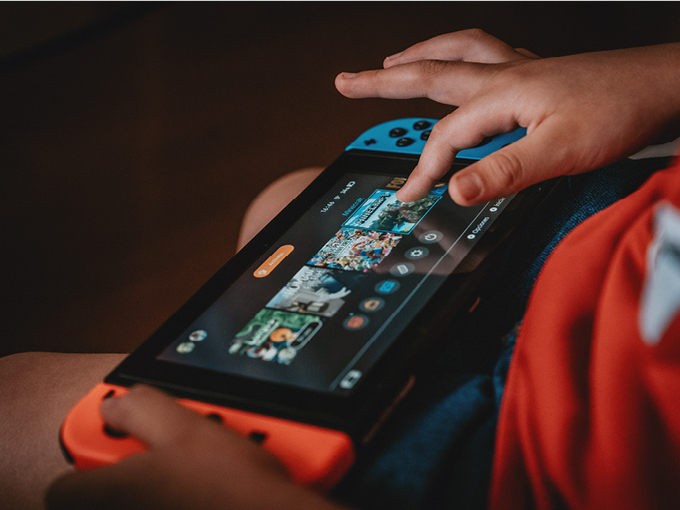Richie and the Fonz spent their Happy Days at Arnold’s Drive-In. The 90210 gang hung out at The Peach Pit. You’d find the Pretty Little Liars at The Brew, and Hannah and her 13 Reasons Why friends gathered at Monet’s.
The hangout is a central feature of most teen TV shows and movies, not to mention real adolescents’ lives as they gain independence from their families. So where do today’s youth socialize with their friends? They’re actually most likely to meet in Sweaty Sands (Fortnite) or maybe even in a dungeon. You can join a birthday party with younger kids at Epic Minigames in Roblox.
“Down on the corner” has become “up on the server” as kids unable to meet up in person practice “digital loitering.” Of course, while COVID-19 has put a spotlight on this practice, it’s not new. The balance of in-person and connected play has naturally been shifting since virtual worlds, social gaming and electronic communication made social surfing possible 20 years ago.
At the same time, parents have narrowed their children’s “home range” to a tiny perimeter. If a child’s neighbors are all into football, but she’s into rock and roll, finding her natural community online becomes a necessary means for satisfying her passion to connect around music.
That’s not to say that virtual and real-world socializing are interchangeable, even for digital kids. In Dubit’s 2020 US and UK Trends surveys (conducted while kids were still in lockdown), eight- to 15-year-olds named friends as the second-most important influence in their lives, just behind their parents. Across ages, what kids miss most right now is face-to-face play. Dubit projects that when the world opens up again, young people may abandon technology and media in favor of spending time with friends, at least for a time.
Revival of Virtual Worlds
In recent years, virtual worlds have enjoyed a renaissance in the form of multiplayer games that offer social space (i.e. Minecraft, Fortnite, Roblox and in Brazil Garena Free Fire). Young people are “hacking” non-game platforms and turning them into virtual worlds (see Discord and Zoom).
And once gathered, kids aren’t just chatting about the gameplay. Every parent of a tween or teen knows that when they’re deeply engaged in a social activity, they talk freely about anything and everything. (Pro tip for parents: That’s the best time to feign inattention and listen.)
According to Dubit Trends, though, these social games are peaking in popularity with younger audiences than the creators may have intended. Roblox crests between ages eight and 10 (44% in the UK and 38% in the US), and Fortnite between 11 and 15 (44% in both the UK and US). Nearly 30% of eight to 10s in the US and 15% in the UK had used Discord in the previous week.
Implications for Brands and Businesses
Media companies need to acknowledge that they’re in the children’s business, regardless of their intended audience. At the most basic level, this means considering legal and regulatory implications—age-gating access or complying with privacy and safety requirements.
It could pay dividends, though, for a platform provider to think about why young people are hanging out at their corner, and consider whether they can turn loiterers into customers. What does it mean to have authentic and valued presence in a social space, whether it’s live or digital?
Having created the first virtual world for youth in 1999, and a soon-to-be-released guide for brands on developing for Roblox, Dubit has 20 years of experience in understanding social play patterns. When it comes to the new digital loitering, we think it’s important for businesses to understand some of the key markers of these platforms.
First, gaming with friends is more of a shared social activity than going to a movie or watching TV, providing content and context for conversation in groups or one on one. Social games and sites also make it easy to connect with other gamers; some platforms use “lobbies” where players can chat, team up and practice while waiting to join the action. These sites and platforms offer opportunities to earn respect of fellow players and bragging rights; consider the ever-changing skins, weapons, dances and emotes in Fortnite, the pride in creating a great Roblox game, or knowledge about how to succeed in a challenge that’s stumped your friends.
Beyond the digital sphere, players like to share problem-solving ideas and strategies within games (when kids play Fortnite in squads, knocked-out players often stay in the game as spotters), and these often can be applied in real-world situations.
Finally, the content itself is important. Games are stories, and players love to immerse themselves and their friends in fantastic environments or situations.
Many games are built for exploring the unknown with exciting rewards (such as finding diamonds and other rare minerals in Minecraft), quests that are more rousing than watching others’ adventures on the TV or movie screen.
Back in the 1990s, a Los Angeles convenience store owner was frustrated by the teens hanging out in his parking lot. His solution was to blast Muzak and annoy the kids into going elsewhere. He should have realized that inviting those teens in and engaging them is an investment in a customer for life. It’s always easier to keep a happy user than to find a new one or recover one who’s left.
David Kleeman is SVP of global trends at Dubit. Dubit’s research and strategy arms work hand-in-hand with its digital studio to help companies and organizations understand their users and build age-appropriate, safe games and experiences that kids love and parents respect.
Photo courtesy of Alvaro Reyes on Unsplash






















